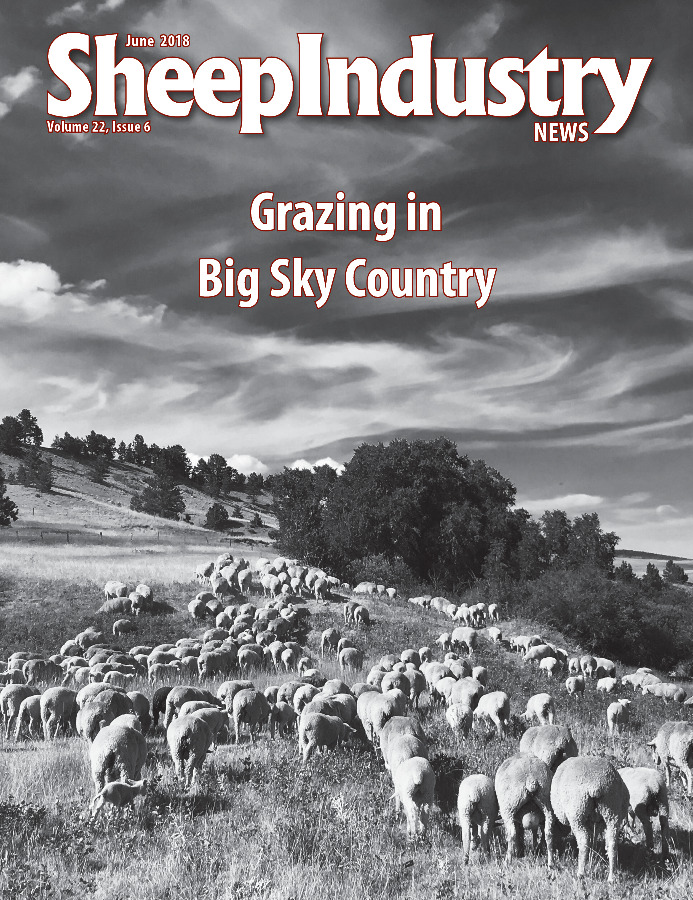Around the States
CALIFORNIA
Buyers Respond to Sale’s Range Ram Index
Suffolk rams topped the 98th annual California Ram Sale with an average price of $691 a head. A total of 460 rams were sold by consignors from Utah, Idaho, Oregon, Nevada and California.
All rams averaged $658 a head compared to $832 in 2017.
This annual sale, hosted by the California Wool Growers Association, is known as a source of quality sheep genetics for commercial producers raising market lambs and breeding replacement ewes. All rams are health and quality sifted by teams of veterinarians and sheep producers prior to the sale.
For the third year in a row the sale was held at the Porterville fairgrounds and all sale rams were ultrasounded for loin eye and backfat. Together with ram weight, a Range Ram Index was calculated using a base value of 100 for comparisons. The index is confirmation a ram has the genetics to sire lambs with improved carcass qualities.
Highest indexing ram of the sale was a Suffolk consigned by David Hansen of Fairview, Utah. The ram had an index of 114.0. A Suffolk ram sold by Jim Neumiller of Healdsburg, Calif., had the second highest index at 112. Third highest indexing ram at 111.3 was sold by Blair and Gina Summey of Lincoln, Calif. Blair and Gina Summey also received the Best Consignment Award. The Best Suffolk Consignment Award went to Lloyd McCabe of Dixon, Calif.
Sale consignors bringing rams with the largest loin eye measurements were Hansen and Neumiller.
The high selling pen of the sale was consigned by Mike Cox of Fairview, Utah. The five crossbred rams brought a total of $6,000. A total of 460 range rams were sold at the auction, up slightly from last year’s sale with 447 head. The 114 head of crossbred rams averaged $626, 29 white face rams averaged $614, and 25 Hampshire rams averaged $504. The three composite rams consigned to the sale averaged $525 a head.
Last year, a pen of three composite rams, a combination of Texel, Columbia and Suffolk breeding, topped the sale at $1,925 per head.
Tougher feed conditions for sheep producers likely affected this year’s sale averages said Ryan Indart, CWGA president.
While feed did come on stronger after March rains, Indart said lack of early rains and the prospect of short grazing conditions months ago might have led potential buyers to make different decisions about their operations.
Rams with a positive index did bring higher per head average prices at the sale. Buyers are responding to this information, Indart said, and see the value in improving the carcass quality of their lambs.


